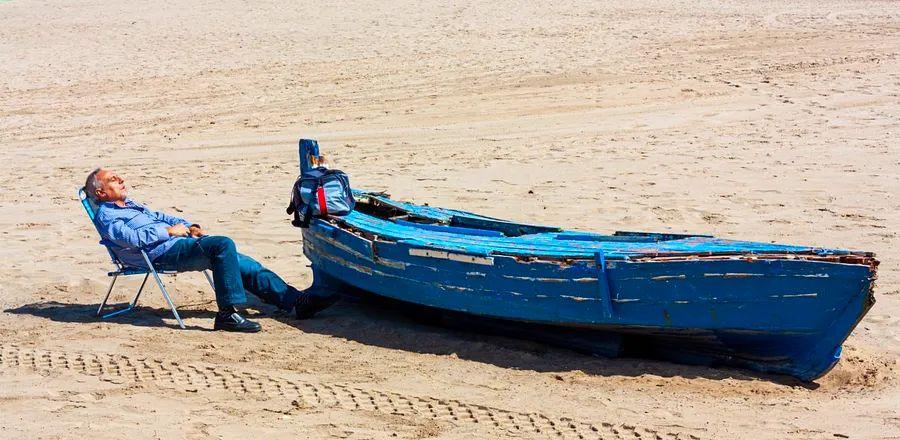The True Reason Behind Siestas in Spain

Afternoon napping is a practice seen in various cultures worldwide. It’s a biological response: after a hearty meal on a warm day, the body’s digestive system requires a break. However, the Spanish siesta—derived from the Latin word sexta, which refers to the 'sixth hour' of the Roman day—holds a unique significance. Sancho Panza, the loyal companion of Don Quixote in Cervantes' famed novel, admitted to taking a lengthy nap of 'four or five hours' following a substantial lunch. In my 34 years in Spain, I’ve frequently observed locals scouting for the perfect siesta spot, whether it be a shaded area beneath a fig tree or a cozy mattress in a wine cellar, long before lunch is served.
The Historical Roots of the Siesta
The exact origins of the siesta as a practice are somewhat murky. One notable historical reference points to the Rule of Saint Benedict of Nursia (480–543 B.C.E.), which mandates silence during the hour between 2 and 3 p.m. This tradition appears to have been embraced in Spain, a predominantly Catholic nation, and adapted to fit local lifestyles. Prior to the tourism boom in the 1960s, when Spain primarily relied on agriculture, it was practical for rural workers to take a break during the hottest part of the day, particularly if they had risen early to tend to their fields. The business hours, running from 9 a.m. to 2 p.m. and then from 5 p.m. to 8 p.m. (still common in retail), mirrored the daily routines of people who would head home for lunch and a midday rest before returning to work.
The Decline of the Tradition
Nowadays, the classic three-course lunch paired with wine in the spacious, air-conditioned offices of Madrid and Barcelona is a thing of the past. Instead, it's become routine to grab a sandwich at your desk and sip coffee from the machine, all while preparing for a 3 p.m. Zoom call with New York. The traditional afternoon nap has little place in the life of a professional working a nine-to-five job. Jesús Egea, an executive at the Madrid office of the German engineering company Siemens, remarks, “The thought of anyone napping during our 45-minute lunch break is unimaginable—though I did witness someone once sleeping on the floor of the company archives.”
There's no denying that the siesta is becoming increasingly rare. A 2016 survey conducted by Simple Lógica found that 57.9% of Spaniards never take a siesta, and only 17.6% do so more than four times a week. Physiologist Maria Ángeles Bonmatí, a researcher at Madrid's Carlos III Health Institute, recently co-authored a study revealing that 70% of Spaniards aged 18 to 34 do not practice this custom, with just 10% taking a siesta on both workdays and leisure days. “It appears that this habit is waning among the younger generation,” she observes.
Ironically, much like species discovered right before their extinction, the advantages of a post-lunch nap are now strongly supported by scientific evidence. Bonmatí highlights its beneficial effects on metabolism and blood pressure, while a 2023 study by researchers at the University of London indicates increased brain volume—crucial for mental health and a potential deterrent against dementia—as well as enhanced learning abilities.
Traditional wisdom in Spain suggests that the ideal duration for a siesta is around 20 minutes. A recent article by the Sleep Foundation (an educational initiative of the sleep wellness brand Sleep Doctor) concurs, noting that 10 to 30 minutes is the optimal duration—and even a brief 10-minute power nap can significantly improve “alertness, mood, memory, and reduce stress.”
“A teacher once told me that the more I sleep, the less I truly live. That perspective is utterly incorrect,” asserts Bonmatí, whose recent book titled Que Nada Te Quite el Sueño: Por Qué Dormir Es Fundamental Para Tu Salud (Let Nothing Keep You Awake: Why Sleep Is Essential for Your Health) (Editorial Crítica, 2023) effectively captures the importance of sleep.
Essential Insights for Travelers About the Siesta in Spain
While the siesta may not be adhered to as strictly as in the past, it’s still a fact that life in Spain tends to slow down just after noon. Most shops remain closed from 2 to 5 p.m., and sometimes even longer. A notable exception is El Corte Inglés department stores, which can be found in all major cities; they remain open all day, are air-conditioned, and are almost empty during the sweltering summer heat. Interestingly, it’s still considered impolite to make personal calls during ‘siesta time,’ regardless of whether the person you’re calling enjoys an afternoon nap.
As a long-time resident, I find la siesta to be not just a benefit but a true luxury. It stands out as one of Europe's remarkable cultural innovations, countering the relentless capitalist drive for increased productivity. As the substantial Spanish lunch winds down, I can feel my eyelids growing heavy and my body growing weak. That’s my cue to shuffle over to my favorite couch and blanket, read a few pages, and blissfully drift into deep REM sleep. Outside, the sun blazes; inside, it’s cool and dim. Often, I disregard the 20-minute guideline and wake up rejuvenated after an hour or two of slumber. The post-lunch nap might be fading away, but I proclaim, “¡Viva la siesta!”
Evaluation :
5/5



